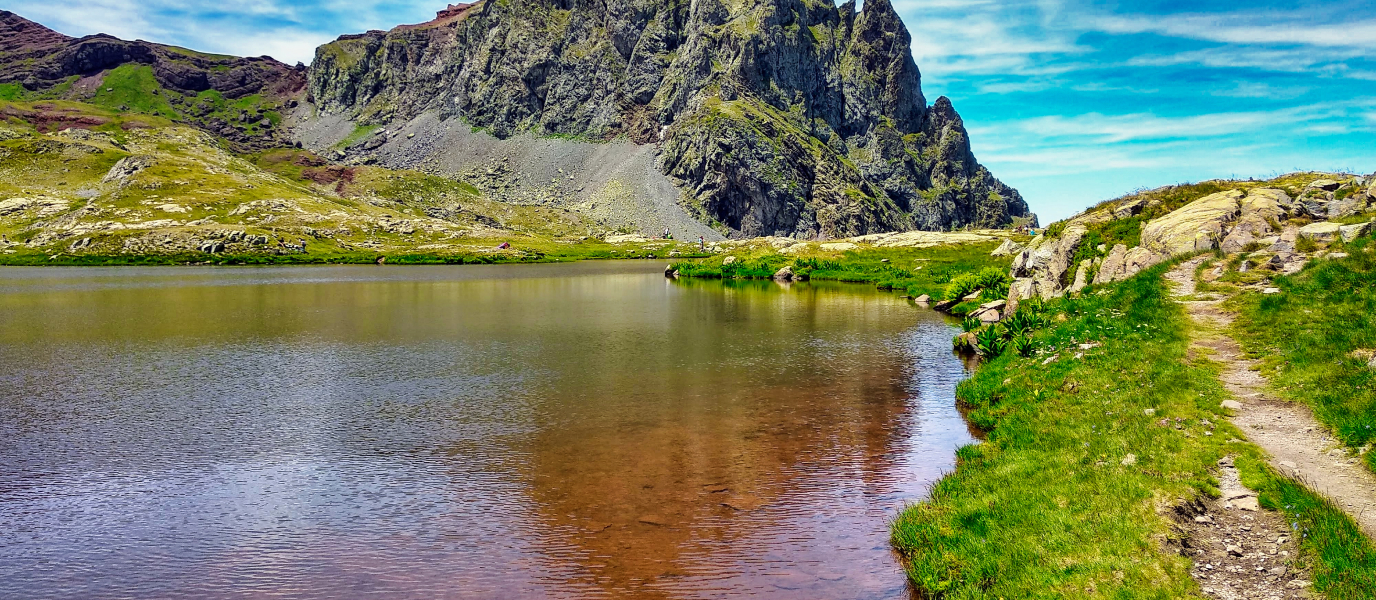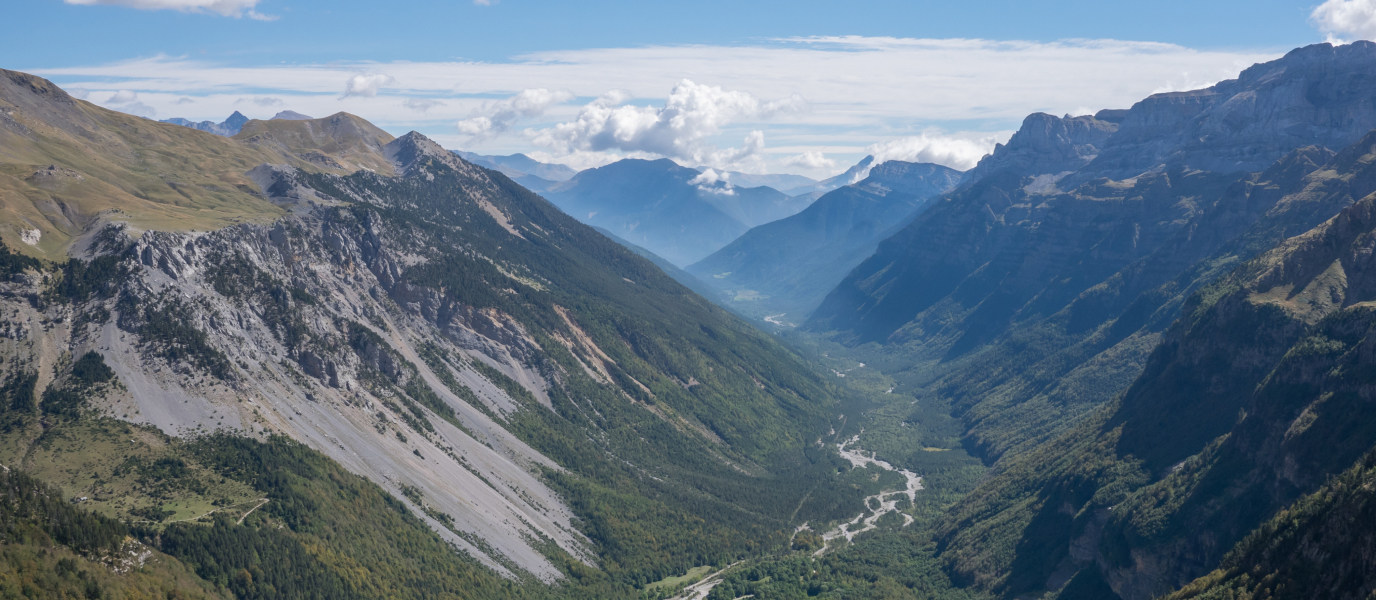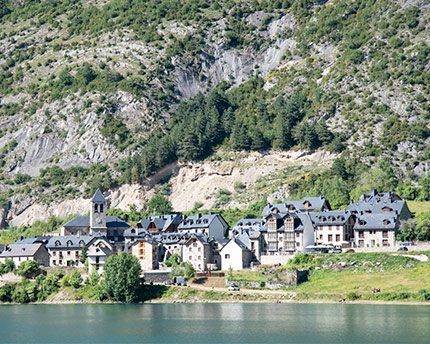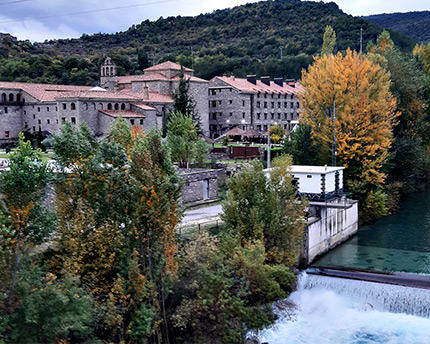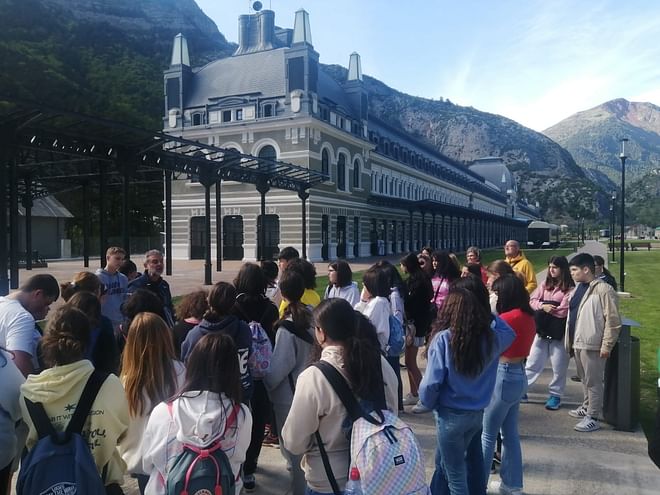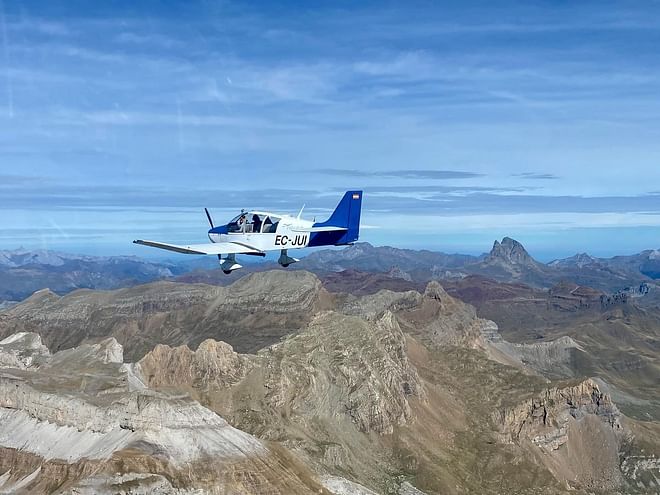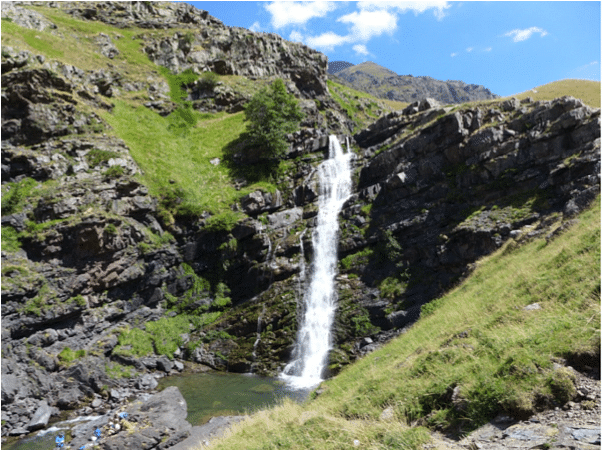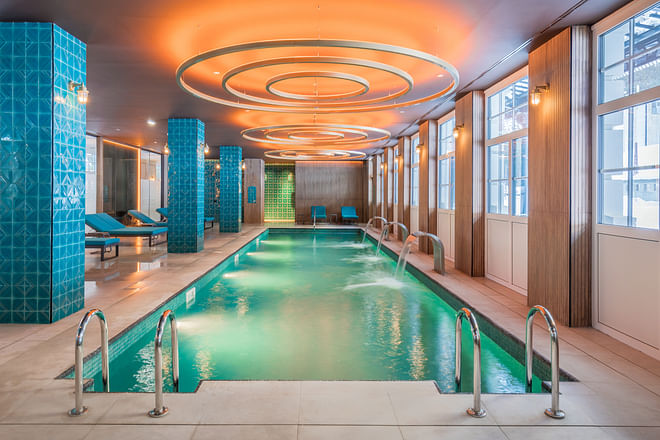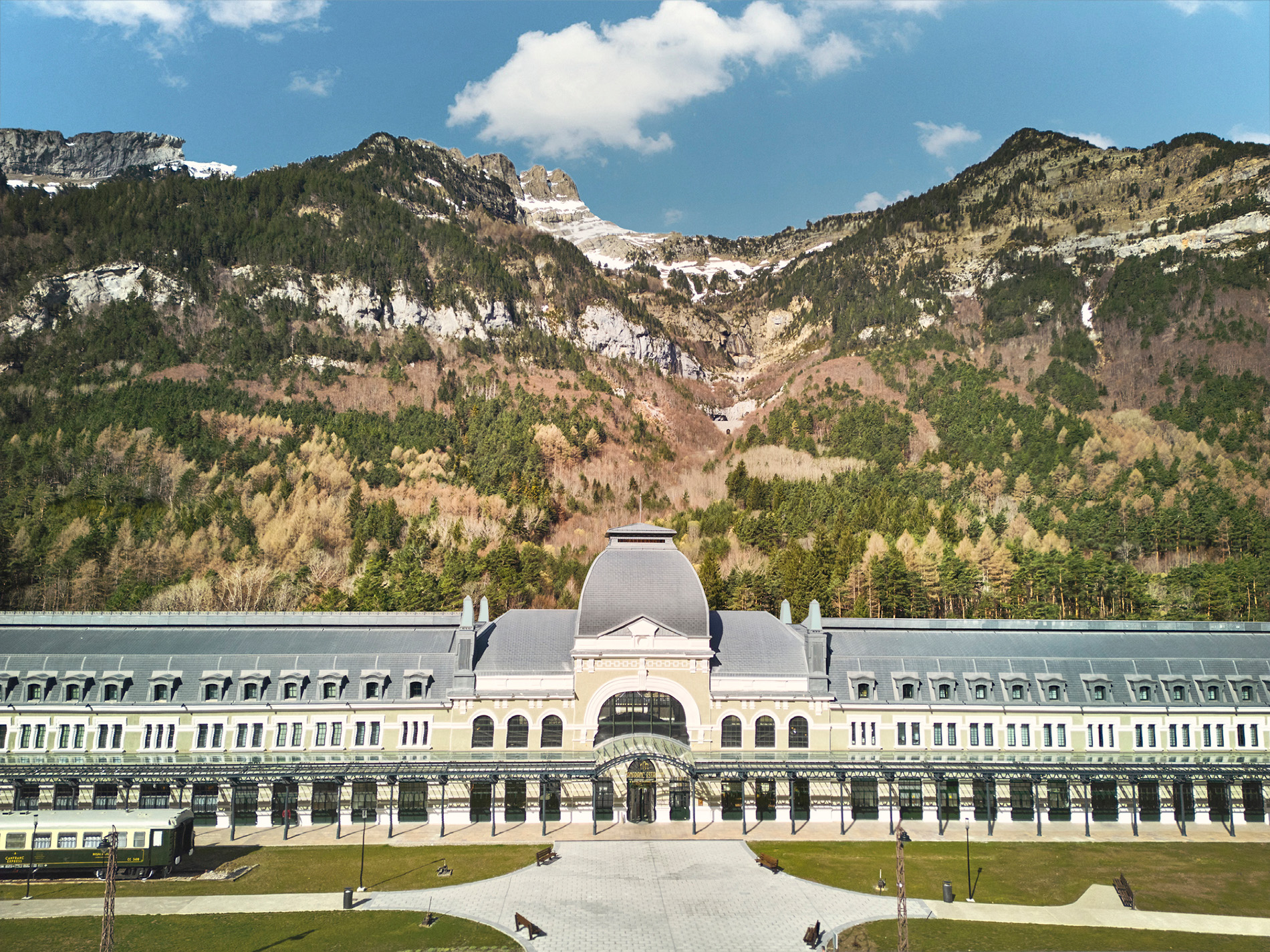There’s a lot to see in the Tena Valley. From its magnificent natural landscapes to towns with a great deal of history and a valuable cultural heritage. In all of them, you can enjoy many leisure and entertainment options for the whole family, with a special focus on activities for children (link to URL on Huesca with children).
We highlight below some of the most interesting places to see in the Tena Valley, along with some ideas for making the most of what it has to offer.
Zip line in the Tena Valley, the closest you can get to flying
In the Tena Valley, you must go to the town of Hoz de Jaca and there, without overthinking it, take off on one of the most thrilling zip lines, not only in the Huesca Pyrenees, but in the whole of Spain.
It’s almost a kilometre long, dozens of metres high, and passes over the town’s reservoir, next to mountains and magnificent coniferous forests. During the descent (with two parallel zip lines) you can reach speeds of up to 90 kilometres per hour.
Lacuniacha Wildlife Park, ideal for a trip with children
Families looking for things to see in the Tena Valley have a very educational resource here. The Lacuniacha Wildlife Park aims to showcase some of the most striking examples of European mountain animals, while raising awareness among children and adults alike about the importance of their conservation.
The park is divided into several enclosures, separated from each other, which are home to brown bears, Iberian wolves, red foxes, deer, fallow deer, roe deer, mouflons, wild boar, boreal lynx, mountain goats, reindeer, and necrophagous birds (such as vultures), among other animals.
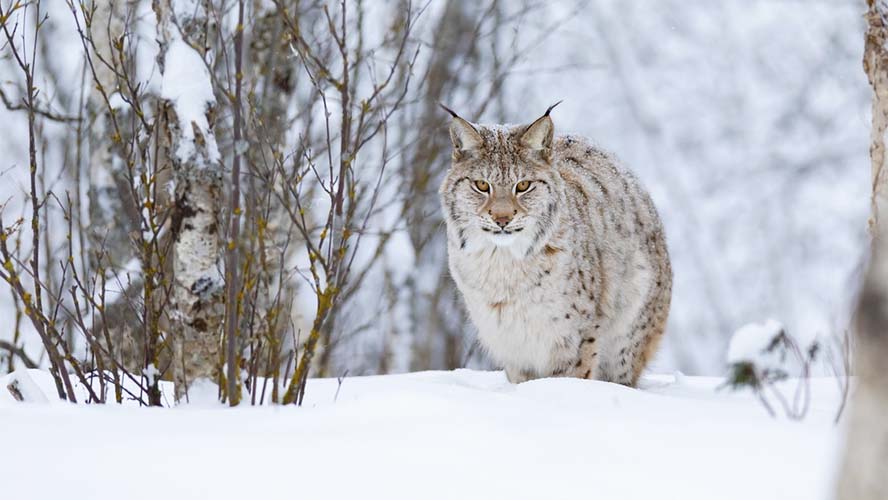
Skiing in Formigal-Panticosa, with 180 kilometres of snow
Winter sports lovers, of course, have a lot to see (and enjoy) in the Tena Valley. Because here is where you’ll find the Formigal and Panticosa resorts, which form part of the Aramón network of winter resorts.
In total, there are 180 kilometres of slopes for all levels, with five different itineraries and 37 ski lifts. The altitudes range from 1,145 to 2,250 metres above sea level.
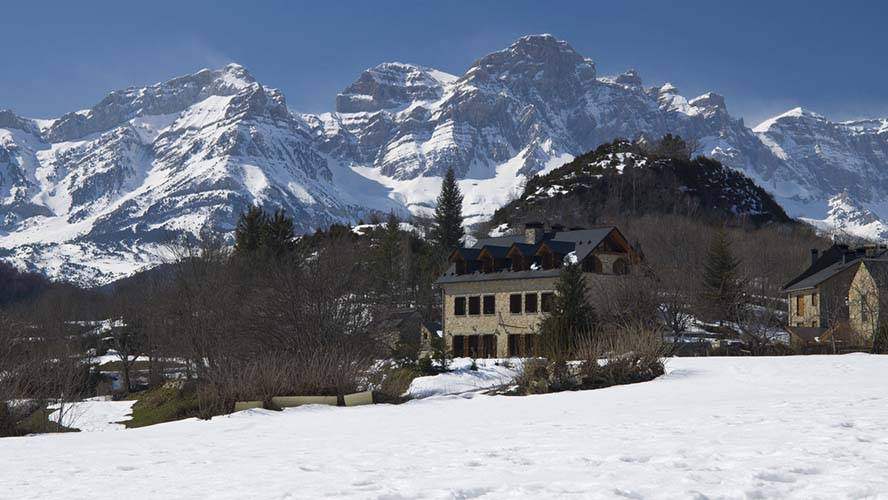
The Tena Valley train, a very convenient option for a visit
Getting on this train is one of the best options to see the Tena Valley in a comfortable way and with in-depth explanations, thanks to the audio guide.
The trip lasts about two and a half hours and departs from Tramacastilla de Tena. During the trip, apart from being able to explore some of the most beautiful spots in the valley, there’s also an introduction to the traditions, history, economy, and flora and fauna of this area.
The villages of the Tena Valley
There are a total of 14 villages to discover in the Tena Valley. These are some of the most recommended, both in terms of their historical and artistic heritage, as well as their natural surroundings:
Formigal
More than a village, this is an urbanisation, created to provide services and accommodation for the Formigal ski resort, located very close to its slopes. Of the original centre of the village, its pre-Romanesque church stands out, which dates from the 11th century.
Panticosa
Undoubtedly one of the most scenic places to see in the Tena Valley, at an altitude of over 1,000 metres and surrounded by peaks of over 3,000 metres. Its stately homes are built around the main centre of the village (Panticosa itself), with the church of Nuestra Señora de la Asunción (16th century), which has a valuable altarpiece above its main altar.
Lanuza
This town is one of the best known in the Tena Valley thanks to the South Pyrenees Festival of Cultures, which takes place here in July. Lanuza is next to the reservoir with the same name.
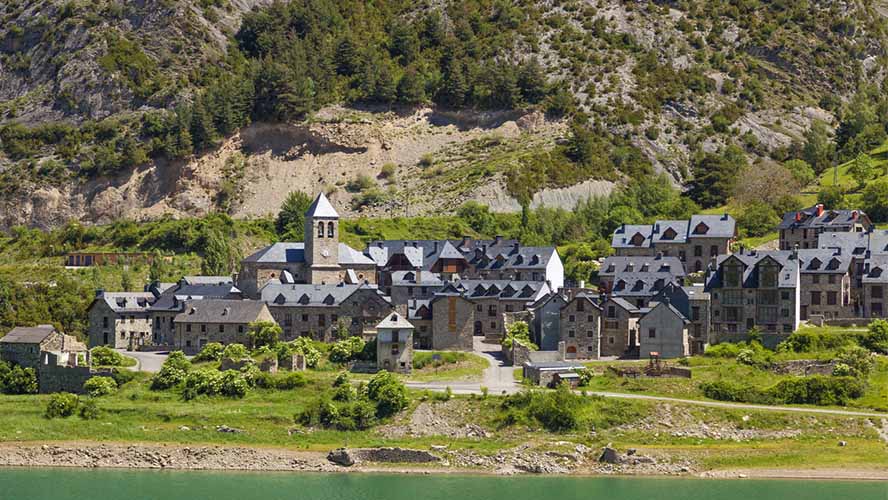
Sallent de Gállego
This village, administrative head of the Tena Valley, is situated at the tail end of the Lanuza reservoir. Here, apart from the urban area as such, the Gothic-style parish church (16th century), with its Renaissance altarpiece is a must see. Its medieval bridge too.
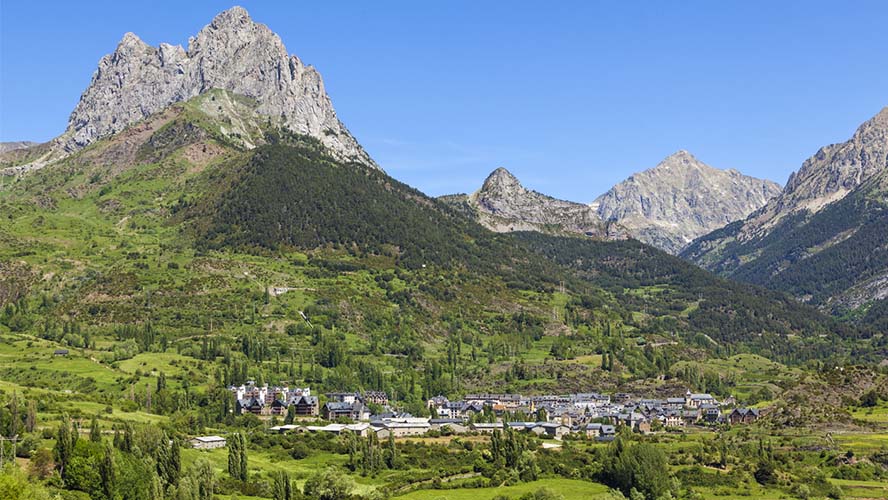
El Pueyo de Jaca
Where the rivers Gállego and Caldarés meet, one of its main points of interest is the Concellar bridge, part of the Camino Real, which was built in 1550.
Sandiniés
This is a small village that still has the charm of the Pyrenean villages in its mansions and chalets, with their slate roofs and façades decorated with heraldic coats of arms.
Biescas
It’s one of the main tourist attractions in the Tena Valley and there are several companies here that organise outdoor activities. Biescas also has an interesting group of churches, as well as several historic mansions.
Sabiñánigo
Is the capital of the Alto Gállego region and one of the “lowest” towns in the Tena Valley, at an altitude of 700 metres. A must see in Sabiñánigo is its medieval fortress, today home to the Julio Galvín-Castillo de Larrés Drawing Museum, with works by Dalí, Zuloaga, Pablo Serrano, and José Guerrero, among other artists.
Routes in the Tena Valley
Given the stunning natural spaces that are dotted around this area of the Pyrenees, it’s easy to see that one of the best things to do in the Tena Valley is to explore it on foot or by bike. There are many established and signposted hiking routes. Here are some of the most recommended ones:
- From Formigal to Collado de Foratata: this is a three-hour walk of medium difficulty. The mountain pass is a genuine natural balcony that overlooks a large part of the Tena Valley.
- Sallent de Gállego-Collado Pazino: this route is ideal for families with children, with a total journey time of just two hours. Much of it runs alongside the Gállego river and through beech forests.
- Lanuza nature trail: it takes just over two hours to go around the Lanuza reservoir from Sallent de Gállego (around six kilometres), undoubtedly one of the most photographic views in the Tena Valley.
- Hoz de Jaca-Biescas: to do this route, of medium difficulty, you should ideally have transport to and from the departure and return points. It can be done in an hour and a half’s walk and part of the route is next to the Búbal reservoir, where the waters stand out for their bluish-green colour.






































































